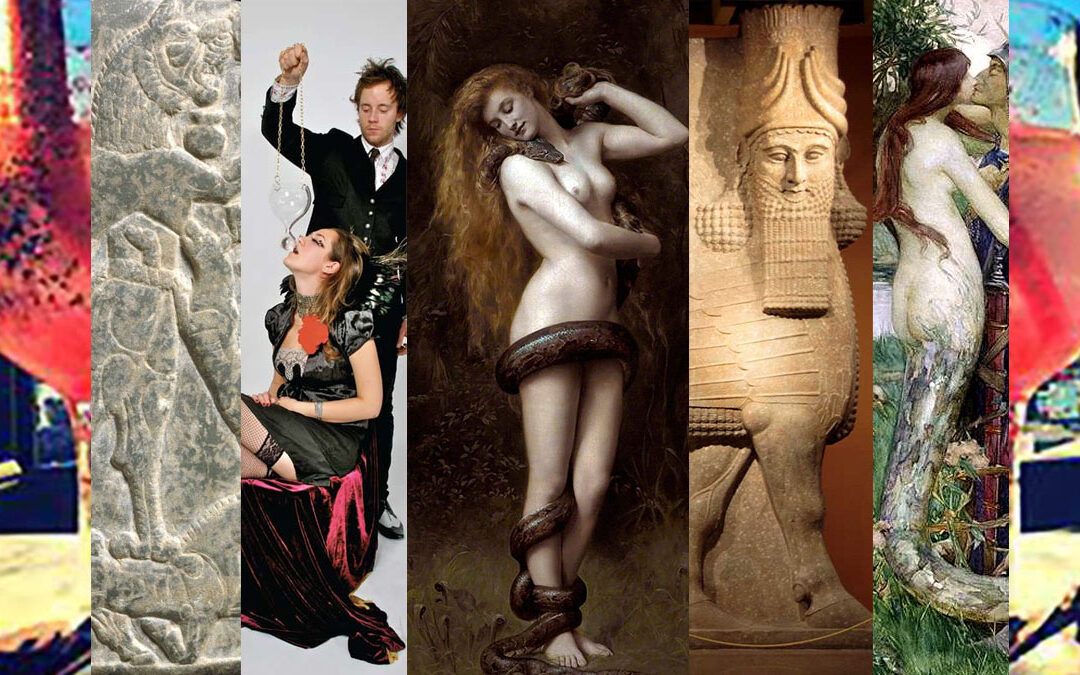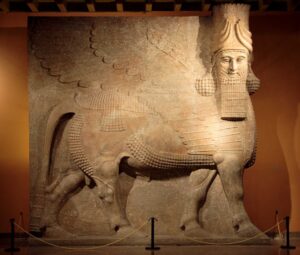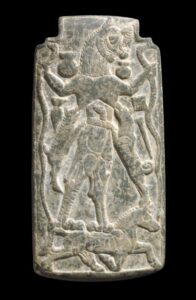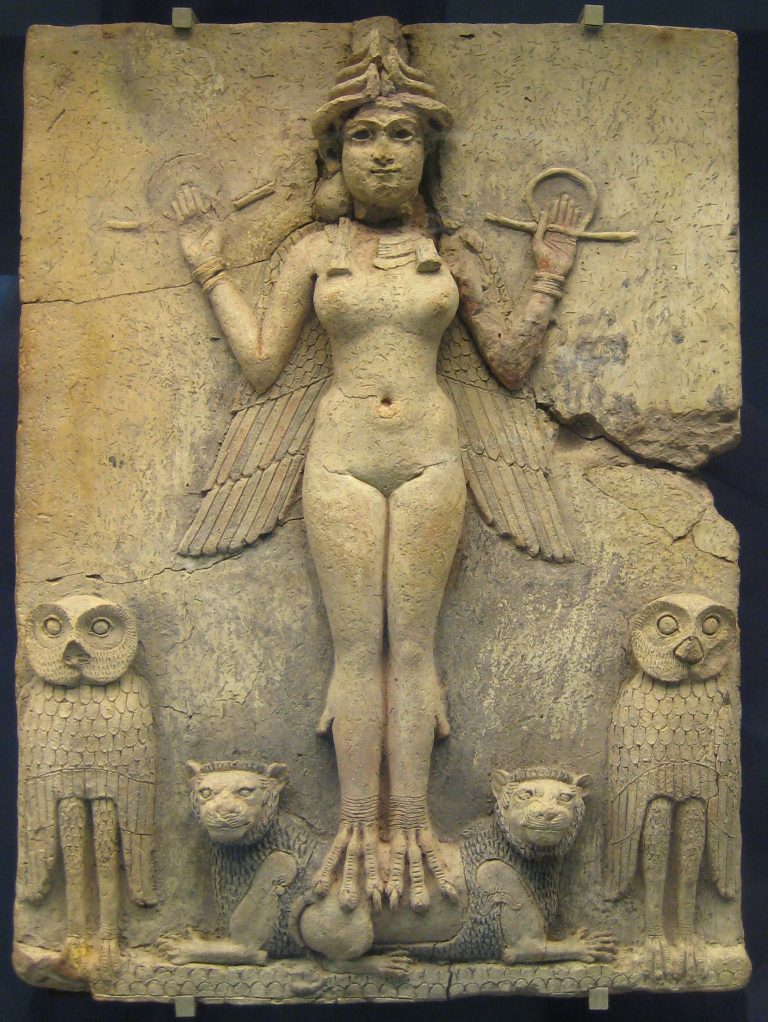
Podcast: Play in new window | Download

The Lilith: Honey and allspice, white wine, and serrano chili liquor. It tastes like heat and honey. With thanks to The Drink Shop.
The seven deadly glasses are a celebration of sin manifested through theatrical drinking. Glass by Kacper Hamilton, image used without permission (but with apologies) from Deezen.com.
Lilith
Hmm…that’s not going to be a really useful subtitle, the entire episode is Lilith.
Jamin opens this chapter with Isiah 34.14, which is one of the few biblical Lilith moments, and the most striking. The hard core academic may want to start with this point-by-point transliteration. If you’re interested in the poetics, this comparative translation from Bible Gateway may be more fun to peruse. In context, this quote talks about the fall of Babylon, and the desolation that will almost certainly come to it. In fairness, this was written in maybe 700 BCE, and Babylon fell around 540, so…that’s pretty good prophecy, all things considered.
One element of Lilithology that Isaiah illustrations pretty clearly is that she’s associated with the wilderness, and seems to be a demonization of nature, at least in part. And, she’s firmly associated with owls.
Etymology, Ululation
Wiki, where all scholarship starts, suggests that Lilith is from a cloud of “lil” words, largely boiling down to “night demons/night beings (female form). Earlier, “lil” may just mean “spirit.” There’s some hazy associations with flying spirits, serpents, and so on.
Lynne Sach’s “Biography of Lilith” is an interesting take on the “First Eve” narrative, and worth watching from a revisionist-religionist storytelling perspective, but we did find the Greek wailing chorus challenging.
Several times we circle back on: Lamassu, a bearded man-bull with old deific roots, possibly in a pair with Aladlammuj, possibly not. “Lamma” becomes a general term for hybrid human-animal deities. I think. Anyway, we’re not clear on this.
Your oh-so-scholarly hosts find the story of Inanna, Gilgamesh, and the Huluppu Tree very amusing, mostly for the alien nature of the text after almost 5,000 years of separation. What is a huluppu trree? What is an anzu bird? Why are there Liliths nesting in it? How does Gilgamesh scare them off? WHAT IS A PUKKU?! So many questions.
“Lamashtu” is a demon, of the “child-killing night hag” family, opposed to Pazuzu, sometimes with a lion’s head and birdlike talons, sometimes holding snakes. “She constantly howls like a demon-dog.” Apparently. I suspect there’s quite a lot more about the Lilith-Lamashtu connection over at Bone & Sickle and frankly I’m glad we didn’t listen to this episode before recording our own. Plausible deniability!
Lamashtu amulet, with thanks to the British Museum
The Burney Relief, which is thought to represent either Lilith, Erishkegal, Ishtaar, or Lilith. With thanks to the British Museum. Although I actually did steal this image from Bone & Sickle. Don’t tell Al Ridenour. Or do.
Abyzou
Abyzou is your all-purpose child-taker demon, possibly related to the general concept of the abyss and primeval sea. She has wild hair, she eats babies. Is she lilith? Maybe, maybe not. But she’s from the same geneology, as all female demons came from Abzu and the primordeal sea, and her legend seems to get conflated with Lilith. Both of them have many, many names, possibly thousands of them, and it’s quite reasonable that these two crazy-haired child-stealers exist in each other’s cloud of names.
Lamia
“It’s complicated.” Lamia was a greek child-eating monster, possibly a beautiful woman who had an affair with Zeus (nothing good comes from having an affair with Zeus). Broadly, Lamia have been associated with half-woman, half-snake creatures, but the myth is completely muddled. Over centuries Lamia sort of merges with vampiric, animal-hybrid figures, and perhaps this story is a part of why, some 1000 years later in the 700s, Lilith has some serpentine elements? In the early middle ages (500-600ish) Lamia had become a broad class of female monsters, and in the Vulgate bible, that Isaiah 34:14 passage uses “lamia” in place of “lilith.” The muddle continues.
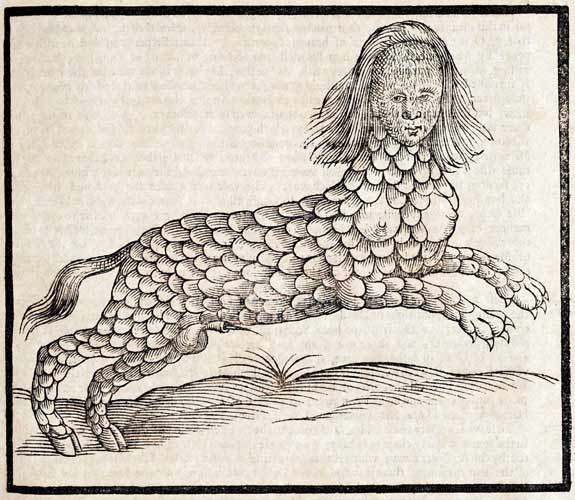
Incantation Bowls, Fetus Wings
The Jewish Woman’s Archive has an excellent article on Lilith with a feminist angle. It’s a solid, general survey of this subject.
The hosts puzzle briefly over fetus wings, and how they signify adultery. “An abortion with the likeness of a lilith, its mother is impure because of the birth, for it is a child, but it has wings” (BT Niddah 24b).” Lilith here may actually refer to an owl?
Incantation bowls could easily be a deep dive on their own. A few thousand of them exist now, and some of them have really great cartoony demons illustrated within. They often have spiralling text, images of demons and banishing spells, and were perhaps buried or placed in the corner of rooms as demon traps.
Succubi
Not a lot of time spent here because I’m pretty sure we’ll go back to succubi and incubi because sex sells and there’s a William Shatner/Esperanto/shapeshifting goat tie-in that will be good for at least 15 minutes of chatter. But I do want to recommend this nice article, “On Sex With Demons,” from Dr. Eleanor Janega’s blog “Going Medieval” that goes in depth into the Succubus myth and how it ties into modern politics.
Alphabet of Ben Sira, The Zohar
These two works provided the shape of the modern Lilith myth, which really doesn’t come from anything Biblical or even particularly bible-adjacent. The Alphabet of Ben Sira, 700-1000 ADish. A sairical book that uses a frame narrative of Ben Sira, son of Jeramiah, telling stories to amuse Nebuchadnezzer. Among 21 other stories, the Alphabet contains the story of Lilith as the first Eve, Lilith’s flight from the garden of Eden, push for sexual equality, divine litigation, and infanticide on an epic level. Also she sleeps with Samael, but frankly who wouldn’t.
The Zohar is basically the source for Kabbalic lore. It’s an elaborate commentary on the Torah, scripture, mysticism, cosmology, and myth, dating from some time in the 13th century. The ultimate sources of these works is up to debate, but it seems like it’s likely a collection of oral tradition, ideas that were floating around in the 1300s, and the work of a small collection of writers. Somewhere in this one, apparently, Lilith and her (sister? Girlfriend?) Naamah seduce Adam and give berth to all manner of strange and evil creatures. She also seduces Azazel and have a polycule with Samael, Agrat Bat Mahlat, and Eisheth. Jacob wishes he’d learned about those three before recording, but the episode is long enough as is.

